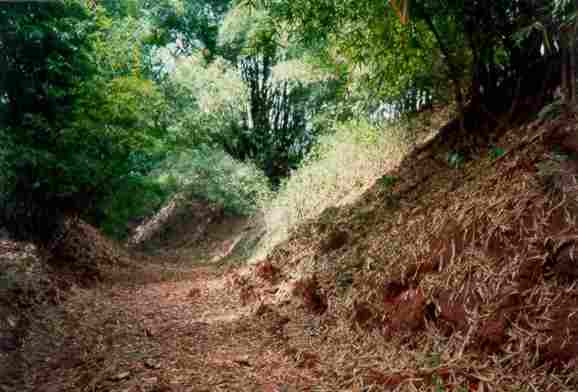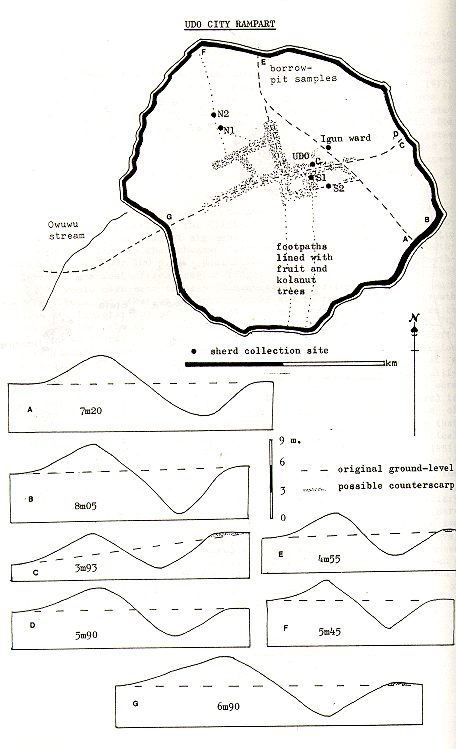 |
||
| Above: the Udo town wall was built in about 1300 AD by Akpanigiakon, a fierce leader who wore a necklace of his victims' teeth around his neck. |
 |
||
| Above: the Udo town wall was built in about 1300 AD by Akpanigiakon, a fierce leader who wore a necklace of his victims' teeth around his neck. |
Data from pottery sherds, linguistics, oral traditions
and early European maps point to Udo being a Yoruba-based kingdom, which
rivalled Benin only 35 kilometres to its south-east. Udo captured Benin
under Oba Ewuare in c.1450 AD and introduced the Oba kingship system and
bronze-casting, whilst receiving tribute from Benin. Udo was itself defeated
by Benin in c.1516 AD and its inhabitants fled to found Yoruba-speaking
Ondo. Today, in Benin's annual emobo ceremony, Benin banishes all
its unfed spirits to Udo. Indeed, Udo is, quite literally, Benin's phantom
capital. Charcoal in the fossil topsoil below the bank provided material
for the radiocarbon date.


|
Left: Waterpots and food bowls used by the Benin army at Unuame in 1517 when it finally attacked and beat Udo. The waterpots are decorated with coarse string and twisted string rouletting, have a finger-pinched band around their neck, and everted, slightly bifid rims. The thick-walled food bowls are decorated with coarse string rouletting on the upper body, twig punctate stippling on the lower body, and are grooved three times just under the rim. |
| Right: Shrine bowl placed near Idia's pots and the main Ovia shrine at Unuame. This bowl has an inturned rim, a pinched cordon round its maximum circumference, and is decorated with an early form of carved roulette. This last decoration was not used in Benin until about the mid-C15th; and can only have been from the west, i.e. Yoruba areas & Udo. |  |